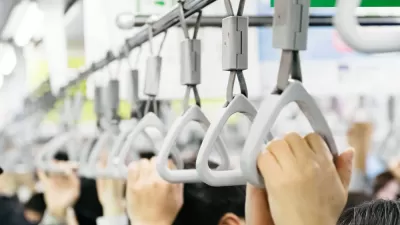Susan Elkin points to alarmingly low statistics on the number of children who walk to school, especially when compared with historic rates. She lays out some “blindingly obvious” and “child-centered” reasons why this trend needs to be reversed.

Elkin writes, “[a] study from the University of Westminster has this week shown that only 25 per cent of primary school pupils now travel home alone as opposed to 86 per cent in 1971 and 76 per cent today in Germany.” She outlines five reasons why it should be normal rather than exceptional for children to walk to school without parental supervision. These five reasons address issues such as: increasing child obesity, child development and socialization, stress- and risk-management, and even the observation of nature. Aside from these, Elkin points to a few others, including benefits to parents, car maintenance, and road congestion.
She also addresses, and debunks, the safety fears that prevent parents from allowing their children to walk to school. For example, she sites NSPCC statistics, which show that children are more likely to be killed by their own parents than by a stranger. On teaching kids about the rules of the road, she adds, “Surely if a parent walks his or her child to school until he or she is, say, eight there will have been ample time to do this?”
Elkin concludes by challenging parents to “break the mould” and to move away from “the hop-in-the-car attitude” that has become “culturally embedded” causing children to “[get] fatter, less curious and less self reliant."
FULL STORY: Only 25 per cent of children walk to school alone compared to 86 per cent in 1971. What went wrong?

Study: Maui’s Plan to Convert Vacation Rentals to Long-Term Housing Could Cause Nearly $1 Billion Economic Loss
The plan would reduce visitor accommodation by 25,% resulting in 1,900 jobs lost.

North Texas Transit Leaders Tout Benefits of TOD for Growing Region
At a summit focused on transit-oriented development, policymakers discussed how North Texas’ expanded light rail system can serve as a tool for economic growth.

Why Should We Subsidize Public Transportation?
Many public transit agencies face financial stress due to rising costs, declining fare revenue, and declining subsidies. Transit advocates must provide a strong business case for increasing public transit funding.

How to Make US Trains Faster
Changes to boarding platforms and a switch to electric trains could improve U.S. passenger rail service without the added cost of high-speed rail.

Columbia’s Revitalized ‘Loop’ Is a Hub for Local Entrepreneurs
A focus on small businesses is helping a commercial corridor in Columbia, Missouri thrive.

Invasive Insect Threatens Minnesota’s Ash Forests
The Emerald Ash Borer is a rapidly spreading invasive pest threatening Minnesota’s ash trees, and homeowners are encouraged to plant diverse replacement species, avoid moving ash firewood, and monitor for signs of infestation.
Urban Design for Planners 1: Software Tools
This six-course series explores essential urban design concepts using open source software and equips planners with the tools they need to participate fully in the urban design process.
Planning for Universal Design
Learn the tools for implementing Universal Design in planning regulations.
City of Santa Clarita
Ascent Environmental
Institute for Housing and Urban Development Studies (IHS)
City of Grandview
Harvard GSD Executive Education
Toledo-Lucas County Plan Commissions
Salt Lake City
NYU Wagner Graduate School of Public Service





























